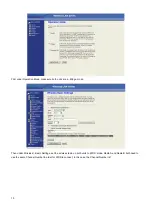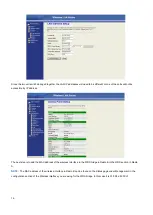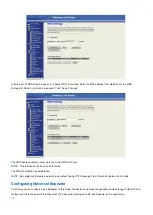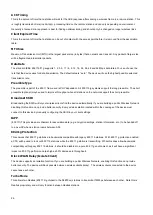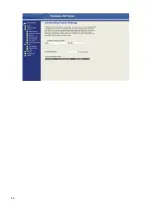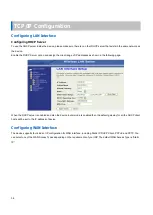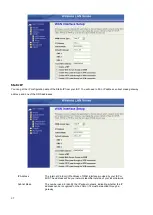
26
ACK Timing
This is the amount of time that a station will wait for the ACK response after sending a wireless frame to a remote station. This
is roughly transmission time (round-trip) + processing time on the remote station and can vary depending on environment.
Generally a trial and error approach is best for finding optimum timing and should only be changed on longer wireless links.
Client Expired Time
This is the amount of time that a station can be out of contact with the access point before it is removed from the association
table.
MTU Size
Maximum Transmission Unit (MTU) is the largest packet size (in bytes) that a network can transmit. Any packet of larger size
will be fragmented into smaller packets.
Data Rate
The standard IEEE 802.11b/11g supports 1, 2, 5.5, 11 / 6, 9, 12, 18, 24, 36, 48 and 54 Mbps data rates. You can choose the
rate that the device uses for data transmission. The default value is
“auto”. The device will use the highest possible selected
transmission rate.
Preamble Type
The preamble is part of the 802.11 frame and is PHY dependant. All 802.11b/g systems support the long preamble. The short
preamble (optional) maybe used to improve throughput when all stations on the network support the short preamble.
Broadcast SSID
Broadcasting the SSID will let your wireless clients find the device automatically. If you are building a public Wireless Network,
disabling this function can provide better security. Every wireless station located within the coverage of the device must
connect to this device by manually configuring the SSID in your client settings.
IAPP
(802.11f) This provides a mechanism for association data (e.g. encryption settings, station information, etc.) to be handed off
to a new AP when a station roams between APs.
802.11g Protection
This ensures that 802.11g stations are backwards compatible with legacy 802.11b stations. With 802.11g protection enabled,
a CTS will be used to lock out 802.11b stations while the 802.11g station is transmitting. While this does allow backwards
compatibility with legacy 802.11b stations, it should be disabled in a pure 802.11g environment, as it will have a significant
impact on 802.11g performance (as high as 50% decrease in throughput).
Block WLAN Relay (Isolate Client)
The device supports an isolation function. If you are building a public Wireless Network, enabling this function can provide
better security. The device will block packets between wireless clients (relay). The wireless clients connected to the device
cannot see each other.
Turbo Mode
This allows two Realtek (802.11b/g chipset in the DLB70xx) stations to transmit at 72Mbps between each other. Note this is
Realtek proprietary and will only function between Realtek stations.
Summary of Contents for DLB27 Series
Page 1: ...DLB27XX WLAN Indoor Outdoor Radio User Manual Version 1 0 0 12 14 2006...
Page 36: ...35...
Page 43: ...42 Clone MAC address for Static IP WAN access type Clone MAC address for PPPoE WAN access type...
Page 44: ...43 Clone MAC address for PPTP WAN access type Physical LAN interface MAC address clone...
Page 47: ...46 In the Dynamic Routing Table there are two routings for Network 3 and Network 4...
Page 51: ...50 Configuring VPN...
Page 62: ...61...




